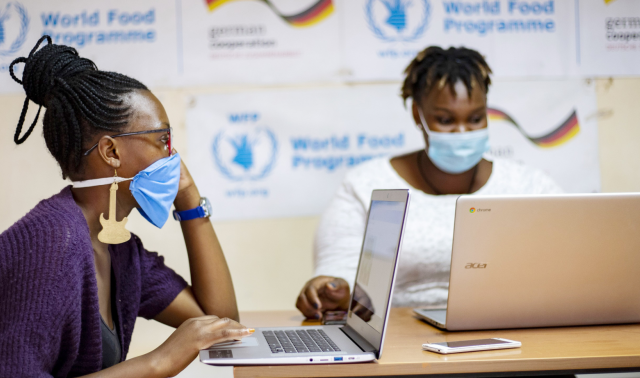Digital health & infrastructure support of Health Information Management System & Tracking (DHIMST) project – November 2024 – 2029.

Health information management system currently deployed by ministry of health is mannual and laborious, patients must introduce themselves and carry books and pens for healthworkers to assess current illness and inquire from clients past medical history to relate to the new treatment and also to underatand if client has allegies to specified drugs or regimen.
Our digital intervention revitalises this and causes shift in management where digitally healthworkers by just one click can access all the medical information including past medical history and family lineage concerns if any manywhere,anytime as long as the user name or User ID is logged in .
Under this project new techinologies shall be established with back up infrastructures from Healthcentre 111 to Regional Referal Hospitals and Nationalised at National Referal Hospital ,Mulago National Referal Hospital Data centre. Healthworkers shall be retooled and re-skilled to adjust and adopt new management as well record officers,data managers and District Biostatiticians.
Data management shall flow from Health Centre 1( VHT) to health centre II,III,IV ,Hospitals and Referals causing shift in HIMS management.
Digital Health & Infrastructure Support for Health Information Management System & Tracking (DHIMST) project in Uganda, focusing on infrastructure upgrades, system integration, and capacity building:
🌐 1. National Digital Health Framework
Uganda’s Health Information & Digital Health Strategic Plan (2020–25) builds the foundation for DHIMST. It aligns with national priorities, aiming to expand digital health tools like electronic medical records (EMR), disease surveillance, and DHIS2/HFMIS integration to support Universal Health Coverage .
💻 2. Strengthening DHIS2-Based Infrastructure
- Customization & deployment of DHIS2: A technical team—including Ministry of Health and HISP—tailored the platform to Uganda’s needs with custom datasets, validation rules, dashboards, and GIS mapping for districts and health facilities. A hybrid mode ensures offline capability until connectivity returns .
- Equipment rollout: Over 53 districts received computers, internet bundles, and technical support funded by Uganda Communications Commission, MoH, and CDC .
📈 3. Enhanced Data Use & System Integration
- Improved dashboards: Immunization dashboards were revamped in 2024 by HISP Uganda and WHO, resulting in a near‑tripling of usage and stronger data-driven decision-making .
- Country-wide DHIS2 adoption: Over 7,000 facilities across 146 districts routinely report via DHIS2, embedding it in national planning and environmental surveillance using climate and pollution data .
🔄 4. Bridging Fragmentation & Building Interoperability
- Uganda previously faced fragmented data systems—multiple incompatible tools during COVID-19—prompting the DHIMST push for interoperability with DHIS2 and the adoption of standards (FHIR, SNOMED, LOINC) .
- Ongoing efforts include linking EMRs, surveillance systems (mTrac SMS feeds), and environmental data sources through DHIS2 APIs and custom apps .
🛠️ 5. Capacity & Governance Strengthening
- Training: Health workers are being equipped to utilize digital tools—covering data entry, analytics, dashboard interpretation, and data-use culture .
- Governance improvements: The program addresses data quality issues—like over/underreporting and private-sector engagement—building frameworks for data stewardship and system governance .
🧩 6. Pilot Innovations & Future Direction
- Integration of environmental health data—such as climate factors and air quality—into DHIS2 enables malaria risk mapping and malnutrition forecasts .
- NextGenHIMS and other interoperable EMR platforms across hospitals are part of the DHIMST effort to unify patient-level data with national HMIS .

✅ Summary of Key Outcomes
| Focus Area | Outcomes |
|---|---|
| Infrastructure | Computers, internet, hybrid DHIS2 tools, GIS |
| Digitization | EMR roll-out in public hospitals; integration with DHIS2/HFMIS |
| Dashboards & Analytics | Revamped dashboards, analytics on immunization, disease, climate |
| Interoperability | Standards-based data exchange among EMRs, DHIS2, surveillance |
| Capacity & Governance | Staff training, data stewardship, quality assurance |
Conclusion:
The DHIMST project cements Uganda’s shift toward a unified, resilient digital health ecosystem—bolstering data-driven care, enhancing surveillance (NCDs, infectious diseases, environmental health), and empowering healthcare providers. With continuous training, governance frameworks, and standard integration, it is pushing national digital health integration forward.